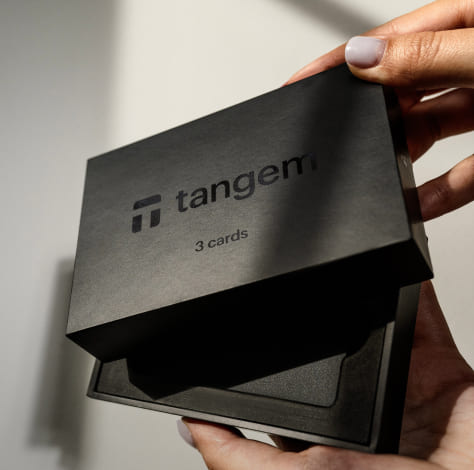
It’s important to keep your hardware wallet secure while ensuring it remains hidden from potential thieves and prying eyes. Utilizing covert storage techniques allows you to disguise your wallet creatively, reducing the risk of theft and increasing your asset protection. By blending your hardware wallet with everyday objects or using clever concealment strategies, you can secure your cryptocurrency investments without drawing attention. This post explores innovative methods to keep your digital assets safe and accessible while minimizing the threat of unforeseen dangers.
Cold Wallet Covert Storage – Hiding Your Hardware Wallet in Plain Sight
There’s a growing need for secure cryptocurrency storage solutions, prompting users to explore cold wallet covert storage methods. By effectively hiding your hardware wallet in everyday items, you can mitigate risks of theft and unauthorized access. This blog post will guide you through innovative techniques that not only ensure the safety of your digital assets but also maintain discretion and peace of mind. Explore creative ways to store your wallet while keeping it accessible yet secure.
Key Takeaways:
- Utilize everyday items or décor to conceal hardware wallets effectively.
- Create a unique storage method that blends seamlessly with your environment.
- Consider both security and accessibility when choosing a hiding spot.
Key Takeaways:
- Utilize everyday objects as disguises for your hardware wallet to enhance security.
- Research and choose locations that are less likely to attract attention while being accessible for you.
- Consider the use of decoy wallets or items to divert potential thieves from your actual storage solution.
Understanding Cold Wallets
For anyone looking to secure their cryptocurrency, understanding the concept of cold wallets is vital. Cold wallets store private keys offline, providing an added layer of protection against online threats. Unlike hot wallets, which are connected to the internet and vulnerable to hacks, cold wallets keep your assets safe from digital intrusions by isolating them from the internet, making them ideal for long-term storage.
What is a Cold Wallet?
Beside other storage options, a cold wallet refers specifically to any device or method that keeps your cryptocurrency private keys offline. This can include hardware wallets, paper wallets, or even an air-gapped computer designed for secure transactions. By keeping the keys completely disconnected from the internet, cold wallets greatly reduce the risk of theft or loss due to cyberattacks.
Benefits of Using Cold Wallets
Against the backdrop of increasing cyber threats, cold wallets offer several significant benefits. Primarily, they provide a high level of security by keeping your private keys offline. This not only helps prevent unauthorized access but also protects against malware that can compromise your digital assets. Furthermore, cold wallets often come with additional layers of encryption and security features that enhance your overall asset protection.
Even more compelling is the fact that cold wallets help mitigate the risk of loss due to exchange hacks or phishing attacks. By managing your private keys in a secure manner, you gain full control over your cryptocurrency, ensuring that your investments remain safe. Additionally, the peace of mind that comes from knowing your assets are secure can encourage more users to engage with cryptocurrency, promoting wider adoption.
Understanding Cold Wallets
While the world of cryptocurrency continues to evolve, the need for secure storage solutions remains paramount. Cold wallets, or cold storage, offer a way to protect digital assets by keeping them offline and away from potential cyber threats. This method contrasts sharply with hot wallets, which are connected to the internet and more vulnerable to hacks. Cold wallets can take various forms, including hardware wallets, paper wallets, and even physically secured storage environments, each designed to minimize risk and enhance security.
Definition and Functionality
Behind the term “cold wallet” lies a straightforward concept: it is a cryptographic wallet that is not connected to the internet, providing a fortified barrier against online theft. Hardware wallets, for instance, store users’ private keys in a secure device, enabling transactions to be signed offline. This method not only reduces the risk of unauthorized access but also ensures that users maintain full control over their assets by limiting exposure to internet-based threats.
Importance of Cold Wallets in Cryptocurrency
On the forefront of cryptocurrency security, cold wallets play an imperative role in safeguarding digital assets from the myriad of threats posed by modern cybercrime. By keeping assets offline, they reduce the likelihood of loss through hacking, phishing, or other forms of cyber attacks. As the value of cryptocurrencies continues to rise, securing these investments is vital, as the consequences of a breach can be severe, potentially leading to total asset loss.
Wallets designed for cold storage not only provide an effective defense against theft but also offer peace of mind for investors. By using cold wallets, individuals can significantly reduce their exposure to online risks, ensuring that their cryptocurrency holdings remain safe and accessible solely to them. The importance of adopting cold wallets as a primary storage solution cannot be overstated, especially in a landscape where threats are constantly evolving and becoming more sophisticated.
The Importance of Covert Storage
One of the key factors in protecting your digital assets is having a secure way to store your hardware wallet. Covert storage allows you to keep your wallet safe from prying eyes and potential theft. In a world where cryptocurrency ownership is growing, ensuring that your wallet is hidden in plain sight can deter opportunistic attackers.
By employing covert storage techniques, you not only enhance the security of your assets but also avoid attracting unwanted attention. Keeping your hardware wallet concealed can mean the difference between losing your investment and maintaining your financial privacy.
Risks of Hardware Wallets
Across the cryptocurrency landscape, hardware wallets are generally considered one of the safest methods for storing digital assets. However, they are not infallible. Physical theft remains a significant concern, as attackers often target individuals perceived to possess substantial assets. Additionally, if a wallet is lost or damaged, recovery can become complicated or impossible without proper precautions.
Furthermore, improper management of your hardware wallet could expose you to risks such as malware attacks or phishing schemes. Even a seemingly secure device can become vulnerable through carelessness in handling or connecting to untrusted networks. Understanding these risks is important for anyone looking to safeguard their investments.
Why Concealment Matters
To effectively protect your hardware wallet, concealment is a fundamental strategy that cannot be overlooked. This approach minimizes the chances of drawing attention to your assets while ensuring quick access when needed. By integrating your wallet into everyday objects or environments, you create a level of security against theft and intrusion.
Matters of concealment are especially significant in today’s digital age, where financial assets are increasingly targeted. Implementing effective hiding strategies can significantly reduce the likelihood of theft or loss. In addition to safeguarding your investment, concealing your hardware wallet in plain sight allows you to maintain privacy, as it keeps strangers unaware of your wealth. The goal is to create a situation where your digital assets remain both safe and accessible without compromising security.
Covert Storage Techniques
You should consider various techniques to effectively hide your hardware wallet. Using items that blend seamlessly into your everyday environment is key to preventing unwanted discovery. This could include common household objects, like false-bottom drawers, old electronics, or even food containers that are no longer in use. By integrating your wallet into these items, you add an extra layer of security against potential theft or loss.
Everyday Objects for Concealment
Covert storage can be set up using a variety of everyday objects. A hollowed-out book is a classic choice, allowing you to disguise your wallet among the pages. Other options include using a fake plant, where the wallet can be secured in the pot, or placing it inside a rarely-used kitchen appliance, such as a blender or toaster. These objects can easily go unnoticed by anyone who isn’t aware of their purpose.
Creative Hiding Spots
On the other hand, utilizing creative hiding spots can further enhance the security of your hardware wallet. Think about less conventional locations: behind loose floorboards, inside ceiling tiles, or within an attic or basement where few people venture. These spots can be particularly effective as they are not typical places for someone to check, making them perfect for hidden valuables.
Techniques for maximizing your wallet’s concealment can be enhanced by selecting locations that seem ordinary yet are often overlooked. Diversifying your hiding spots between multiple locations minimizes risk. For example, placing different wallets in various areas of the house can make it harder for someone to find them all. Ensuring that your wallet is securely fastened and disguised within the chosen spot is necessary; a tightly sealed container or a cleverly disguised compartment will prevent accidental discovery and provide an extra level of protection.
Strategies for Hiding Your Wallet
Many individuals seek effective methods for concealing their hardware wallets, aiming to keep their cryptocurrency investments secure. Utilizing everyday objects around the house provides an excellent way to blend your wallet into your surroundings, making it less likely to be discovered. Items like books, potted plants, and common household appliances can serve as ideal concealment spots, offering both camouflage and accessibility.
Everyday Objects as Concealment
Before selecting an item for concealment, assess its typical use in your home environment. Placing your hardware wallet inside a hollowed-out book can effectively hide it in plain sight, as books are often overlooked. Additionally, you can incorporate your wallet into a decorative object—such as within a plant’s pot—ensuring it remains hidden while staying close at hand.
Creative Disguises
Wallets can also be disguised as everyday items that blend seamlessly with your routine. Consider using items like a fake power bank or a broken electronic device. These objects are less likely to attract attention, allowing for secure storage.
The key to effective disguises is to choose items that complement your personal style and environment. By using a regular-looking phone case or a fake USB drive, you create a distraction that conceals your hardware wallet while remaining functional. Additionally, these creative disguises not only hide your wallet but also provide peace of mind, knowing your assets are stored away from prying eyes.
Tips for Maximizing Security
Now, securing your hardware wallet requires a multifaceted approach. Follow these guidelines to enhance your security measures:
- Store your hardware wallet in a discreet location.
- Set a strong PIN code that is hard to guess.
- Regularly update the firmware to protect against vulnerabilities.
- Use a two-factor authentication method wherever possible.
- Keep a backup of your recovery phrase in a secure place.
After implementing these strategies, your ability to safeguard your assets will significantly improve.
Maintaining Privacy
Against prying eyes, maintaining your privacy is paramount. Avoid sharing details about your hardware wallet or cryptocurrency holdings publicly. Use non-descriptive labels and be mindful of your surroundings when discussing financial matters.
Furthermore, operate your wallet in a secure environment. Ensure any device you use to access your wallet has updated security software. Consider utilizing a dedicated mobile device solely for your crypto activities to enhance your privacy.
Accessing Your Wallet Safely
By practicing safe access protocols, you can significantly reduce the risk of hacking or theft. Only connect your hardware wallet to trusted devices, avoiding public computers or unsecured networks. Always verify that you are using official software before proceeding with any access.
Wallet safety is dependent on your actions. Utilize a secure internet connection and avoid using WiFi when accessing sensitive information related to your hardware wallet. Make it a habit to swap out USB cables that may be compromised and always check for malware on any device you’re using. Regular audits of both hardware and software can ensure that you remain protected against potential threats, allowing for a smoother experience when managing your holdings.
Best Practices for Covert Storage
Keep in mind that effective covert storage requires not just placing your hardware wallet somewhere obscure but also ensuring it blends seamlessly with its surroundings. Consider locations that are both inconspicuous and easily accessible, such as inside common household items like a book or a fruit bowl, where it looks unremarkable. The goal is to choose a spot that won’t attract attention, yet remains convenient for regular access when needed.
Selecting the Right Location
After identifying potential spots, evaluate the security risks associated with each location. Avoid areas that could be easily searched or are often disturbed, such as drawers frequently opened by others. Opt for locations that provide an additional layer of security while still offering secrecy, like behind a false bottom in a hidden compartment or disguised within decor items that remain undisturbed.
Maintaining Security
At all times, maintain a high level of awareness surrounding the locations of your hardware wallet. Make sure to implement additional security measures, such as using strong passwords and two-factor authentication on any associated accounts. Regularly review who has access to your space and be alert to any visitors who may inadvertently become aware of your covert storage methods.
Plus, affirming consistent vigilance regarding your hardware wallet’s security is crucial. Regularly review its location, ensuring it remains undisturbed and secure. Change your storage spots periodically to minimize risks and think about incorporating decoy items in the same vicinity to further divert attention from your actual wallet. This not only enhances your storage solution’s effectiveness but also promotes a peaceful mindset knowing your assets are well protected.
Risks and Considerations
Once again, while cold wallet covert storage can offer a high level of security, it is important to acknowledge the potential risks involved. The effectiveness of hiding your hardware wallet is contingent on the ingenuity of the concealment method and your understanding of potential threats. If the location is compromised or if anyone discovers the wallet, the security of your funds is at risk.
Additionally, factors such as physical damage, theft, and environmental hazards can impact the safety of your hidden hardware wallet. Regularly assessing your storage location and potential vulnerabilities in your concealment strategy is vital to ensure that your assets remain protected over time.
Potential Threats
Among the various threats to your hardware wallet, one of the most significant risks is physical theft. If someone suspects that you are hiding valuable items, they may search for and potentially find your wallet. Also, if you relocate your wallet to a new hidden location, you may forget its precise position, making recovery difficult if needed.
Moreover, the risk of environmental damage cannot be overlooked. For instance, placing your wallet in a location susceptible to moisture or extreme temperatures could lead to irreversible damage, resulting in loss of access to your funds. Staying mindful of these threats is crucial for maintaining your wallet’s security.
Avoiding Common Mistakes
Threats to your hardware wallet can be mitigated by avoiding common mistakes in its storage. One common pitfall is using obvious or well-known hiding spots that others might think of. Instead, choosing unique, less conspicuous locations can enhance security. Another mistake is failing to create a backup of your wallet’s recovery phrase. Losing this phrase can result in a total loss of access to your crypto assets.
Potential mistakes like neglecting to account for everyday activities that might expose your wallet, such as cleaning or remodeling, can lead to unintended discoveries. Regularly revisiting your storage methods and ensuring you are not inadvertently compromising your wallet’s security will strengthen your protection strategy.
Digital Versus Physical Security
Not all security measures are created equal. Digital security often involves robust software protections such as encryption, firewalls, and access controls, allowing for a relatively seamless layer of defense against online threats. However, physical security pertains to the tangible safeguards surrounding hardware wallets and their storage locations, which can be just as vital in ensuring the overall security of your digital assets.
While digital security can efficiently block cyber threats, reliance on it alone may lead to vulnerabilities that physical security can address. A comprehensive security approach combines both digital protections and physical safeguards, ensuring that both online and offline threats are mitigated effectively.
Encryption and Backup
By implementing strong encryption protocols, your hardware wallet remains safeguarded against unauthorized access. Consider using wallets that support advanced encryption standards, which can significantly reduce the risk of your valuable assets being exposed. Regular backups of wallet data further enhance security by ensuring that you can recover your funds even if your wallet is compromised or damaged.
By creating multiple secure copies of your wallet’s backup phrases and recovery keys, you can protect against loss or destruction. Store these copies in various secure locations, ensuring that they are inaccessible to potential intruders while being easy for you to access when needed.
Physical Protection Strategies
For those seeking to enhance the security of their hardware wallets, physical protection strategies are important. This includes utilizing hidden compartments or secure safes that blend with household items, reducing visibility while providing robust physical barriers against theft. Implementing everyday objects as decoys can further obscure the true location of your wallet, making it a challenge for potential thieves to find.
At the same time, locate your hardware wallet in places that are both secure and unexpected. Utilizing common household items like books, false electrical outlets, or potted plants can act as effective disguises. This strategy increases the difficulty for would-be thieves while making your hardware wallet accessible to you in emergencies. The key lies in selecting locations that feel secure while remaining inconspicuous to outsiders.
Real-Life Examples
Despite the rising interest in cryptocurrency, many individuals have successfully implemented covert storage tactics for their hardware wallets. Numerous stories have emerged about holders who have creatively concealed their digital assets within everyday items, showing that it’s possible to maintain security while keeping wallets hidden in plain sight. This innovative approach not only adds a layer of protection against theft but also minimizes the visibility of your investment to those who might not understand the significance of what they see.
Successful Covert Storage Cases
RealLife illustrations of successful covert storage tactics are abundant. For example, some users have utilized common household items, such as fake plant pots or old electronic devices, to hide their hardware wallets. In one notable case, an individual embedded their wallet inside a hollowed-out book, which sat inconspicuously on a shelf alongside other personal belongings. This effectively obfuscated the asset from potential thieves or unwanted visitors, showcasing the potential of combining creativity with practicality.
Lessons Learned
Covert storage techniques highlight the importance of being strategic with your concealment methods. Many lessons have surfaced, emphasizing the necessity of disguising hardware wallets in a manner that minimizes the chance of accidental discovery. Additionally, understanding your environment can significantly enhance both security and accessibility.
Hence, it becomes evident that while hiding a hardware wallet can provide a sense of safety, it is imperative to strike a balance between security and ease of access. Investing time in developing effective covert strategies can lead to greater peace of mind, while learning from others’ experiences can help avoid common pitfalls faced by cryptocurrency holders. The right approach not only protects your assets but also boosts your confidence in managing them discreetly.
Case Studies of Successful Concealment
Keep in mind that effective concealment strategies can be the difference between losing and securing your digital assets. Here are some notable case studies highlighting successful concealment of hardware wallets:
- Case Study 1: A user hid their hardware wallet inside a fake electrical outlet. During a burglary, the thieves overlooked it completely, leading to zero loss.
- Case Study 2: A family used an old sewing machine to conceal their wallet in plain sight. It was untouched amidst other valuable items at home during a theft.
- Case Study 3: An investor placed their wallet in a secret compartment within a bookshelf. It remained undetected during multiple home inspections.
- Case Study 4: A tech-savvy individual created a decoy USB drive that resembled their wallet, misleading anyone who might search for it.
Real-Life Examples
Between these case studies, we can see a pattern of innovation and creativity in hiding hardware wallets. The combination of everyday objects and clever modifications allowed owners to reap the benefits of strong security without drawing attention to their valuables. For instance, using a common household item creates a sense of normalcy, making it difficult for potential intruders to identify anything out of the ordinary.
Lessons Learned
Successful concealment strategies can be inspired by routine living. Many owners learned that avoiding typical hiding spots, such as safes, can enhance security. Instead, unconventional locations within daily-use items can provide better protection. This emphasis on creativity and location choice is key in developing a concealment method that minimizes risk.
This highlights that utilizing everyday items not only keeps your hardware wallet safe but also enhances your peace of mind. Engaging in thoughtful planning around storage options, disguises, and common intruder behavior can significantly mitigate risks. Avoiding predictability in concealment locations is a vital lesson, allowing you to confidently secure your digital investments.
Future of Cold Wallet Storage
After experiencing a significant rise in cryptocurrency adoption, the future of cold wallet storage looks promising as technological advancements continue to enhance security and usability. Innovations such as biometric authentication and multi-signature capabilities are being integrated into hardware wallets, making it increasingly difficult for unauthorized users to gain access. This trend indicates a clear movement towards more sophisticated security measures as users demand better protection against potential threats.
Innovations in Security
Around the industry, new security features are emerging that address both user convenience and protection against theft. Enhanced encryption standards and tamper-proof designs are setting new benchmarks for hardware wallets, making them more resilient to hacking attempts. Additionally, the development of decentralized storage solutions could offer an added layer of security, allowing users to manage their assets without solely relying on physical devices.
Evolving Threat Landscape
Future developments in cold wallet storage must account for the rapidly evolving threat landscape that exposes users to increasing risks. As cybercriminals become more sophisticated, threats such as remote hijacking and hardware tampering are becoming more prevalent. This necessitates constant adaptation and the implementation of robust security protocols to mitigate such risks effectively.
The growing prevalence of phishing attacks and social engineering tactics aimed at compromising user credentials highlights the importance of ongoing education and awareness among users. As hackers devise new methods to exploit vulnerabilities, the evolution of cold wallet technology must incorporate smart solutions to counteract these dangers, ensuring that safety measures keep pace with the techniques employed by malicious actors.
To wrap up
To wrap up, utilizing cold wallet covert storage techniques can significantly enhance the security of your hardware wallet. By creatively concealing your device in everyday objects or cleverly disguised storage solutions, you reduce the risk of theft while maintaining easy access to your digital assets. This proactive approach allows you to protect your investment without drawing unnecessary attention to its presence.
Moreover, implementing these strategies fosters a greater sense of confidence regarding your cryptocurrency holdings. As the digital currency landscape continues to evolve, adopting innovative security measures becomes increasingly important. By blending protection with practicality, you can effectively safeguard your assets while keeping them hidden in plain sight.
Final Words
Taking this into account, the practice of cold wallet covert storage offers a practical solution for safeguarding hardware wallets while maintaining ease of access. By cleverly concealing your device in everyday items, you can significantly reduce the risk of theft or unwanted attention. This strategy encourages users to think creatively about their storage options, ensuring their cryptocurrency assets remain protected without drawing unnecessary scrutiny.
In brief, implementing effective covert storage methods can enhance the security of your digital assets while allowing for peace of mind. Whether it’s hiding your hardware wallet in common household items or integrating it into your daily routines, these techniques provide a layer of protection that aligns with the ever-evolving landscape of cryptocurrency safety. Prioritizing discretion is necessary, ensuring your investments stay secure without compromising on accessibility.
FAQ
Q: What is cold wallet covert storage?
A: Cold wallet covert storage refers to the practice of securely hiding a hardware wallet in a location that conceals it from potential theft or loss while remaining easily accessible to the owner. It involves choosing ordinary, everyday items or locations to obscure the wallet.
Q: What are some effective methods to hide my hardware wallet?
A: Effective methods include placing the hardware wallet inside a false container, such as a cosmetic or medicine bottle, embedding it within furniture, or using everyday items like books or electronic devices that may not raise suspicion when examined.
Q: Are there any risks associated with covert storage of my hardware wallet?
A: Potential risks include the possibility of forgetting the hiding place or accidental exposure during searches by others. Additionally, certain methods, like embedding the wallet in items accessed frequently, may increase the risk of damage or loss.







